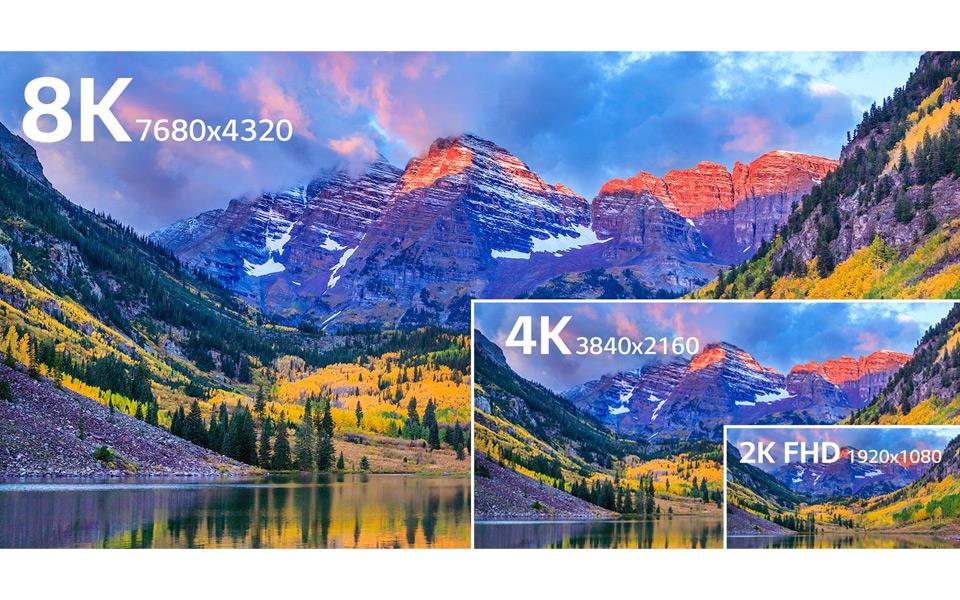
8K Displays Are Stunning, But Marketplace Adoption Remains Minimal
November 8, 2022 by Dave Haynes
There may well be some 8K displays in stands at next week’s Digital Signage Experience trade show in Las Vegas, but there’s not a lot of indication – at least not yet – that the industry and the much broader general public are all that anxious to pay the premiums and adopt that super high-resolution technology.
The online publication TVTech has a post up that explores the business state of 8K displays, most notably pointing out that 8K-capable TVs in the US are expected to represent just 1.26% of the consumer TV market next year.
The underlying technology, particularly cameras, is there, but so far has mainly just been used for high profile sporting events, such as the Olympics in Tokyo.
Notes TVTech:
The challenge facing proponents of 8K is consumer adoption. Market research firm Omdia anticipates that just 2.7 million households worldwide are expected to have an 8K TV by the end of 2026. According to the firm, shipments of 8K TVs only accounted for 0.15% of all TV shipments in 2021. The CTA forecasts 479,000 8K-capable TV sets in the US by 2023—out of an overall market of 38 million sets—that’s a market penetration of only 1.26%.
The logistics of transmission are a significant obstacle to 8K becoming a broadcast format. The HEVC 8K codec used for the Tokyo Olympics required a bitrate of 85 Mpbs. Advances in the efficiency of the coding algorithm allowed a bitrate of 40 Mbps for an 8K trial at the 2019 French Open.
Putting these numbers in perspective: the transmission bitrate of terrestrial broadcast HD channels averages around 6 Mbps—from as low as 1.1 and bursting up to 11.0 Mbps. To deliver equivalent quality for a 4K broadcast, a bitrate of 9 Mbps is needed. 8K requires a significant leap up to 48 Mbps, which is 8 Mbps greater than the entire bitrate available in the UK’s HD multiplex, which currently carries 9 HD and two SD channels.
In a world in which over-the-air bandwidth is scarce and the subject of intense competition for access, it is turning out to be difficult to create a business case that justifies replacing 11 channels with one to service only 1.26% of the market.
There are certainly digital signage and pro AV applications that would benefit from 8K, such as luxury jewelry retail and applications like medical, military and mineral exploration imaging. But most current use-cases for digital signage displays don’t have the sightlines and audience dynamics that would allow viewers to even notice the difference between a 4K and 8K screen. A LOT of the meat and potatoes operational stuff being deployed in places as diverse as airports and fast food chains would do just fine with conventional HD, never mind 4K, given what’s showing on screens.
I’ve seen 8K numerous times. It’s gorgeous. But it’s all that clear it’s all that necessary, given the complications and costs that currently come with it.



Leave a comment